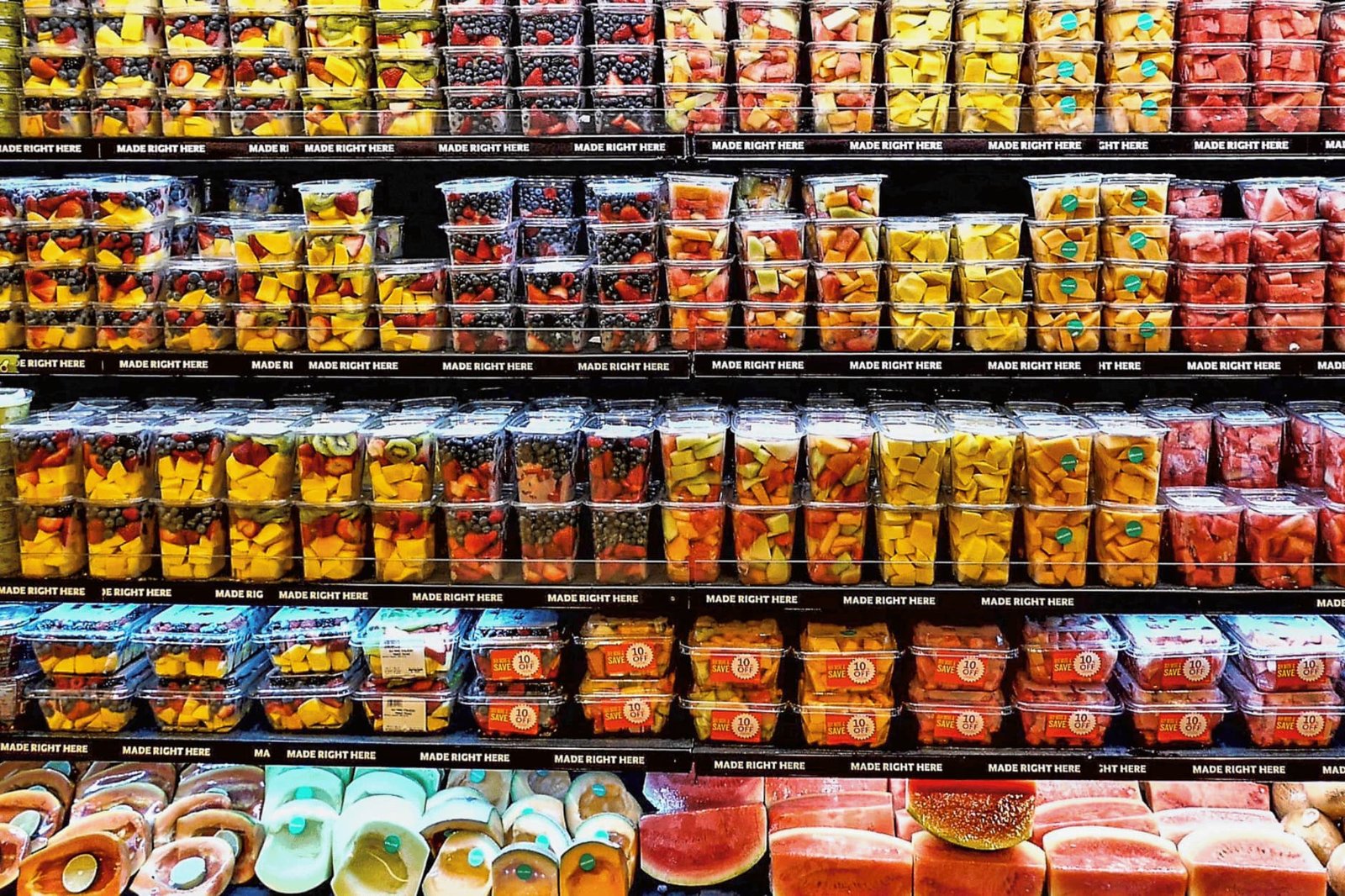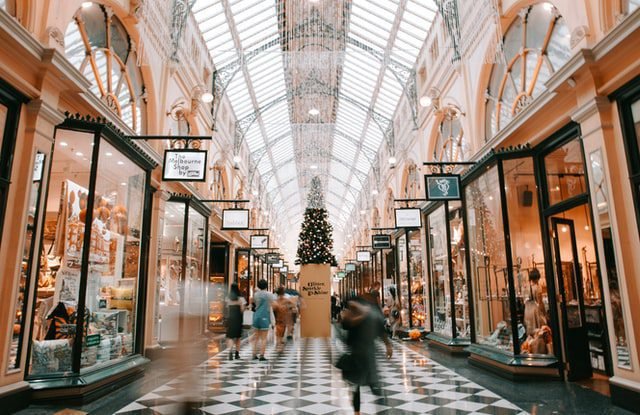The retail landscape is evolving at an unprecedented pace. With the advent of new technologies, changing consumer behaviors, and emerging trends, retailers must adapt to stay competitive. This comprehensive guide explores the future of retail in 2024, offering insights and strategies for success.
The Evolution of Omnichannel Retail
Seamless Integration
In today’s retail world, customers expect a unified experience across all channels. Whether they shop online, visit a physical store, or use a mobile app, they demand a seamless transition between these platforms. This means their shopping cart should be the same regardless of the device or location. Retailers need to ensure that their online and offline systems are integrated, allowing for a fluid customer experience. For example, a customer might browse products on their smartphone, add items to their cart, and then complete the purchase in-store.
Personalization
Personalization has become a crucial aspect of modern retail. By leveraging data analytics, retailers can understand their customers’ preferences and behaviors. This allows them to offer personalized product recommendations, tailor marketing messages, and create a more engaging shopping experience. For instance, if a customer frequently buys running shoes, they might receive personalized emails about new arrivals or special discounts on running gear. Personalization not only enhances customer satisfaction but also drives sales and loyalty.
Convenience
Today’s consumers value convenience above all else. They expect retailers to provide services that make shopping easier and faster. Features like click-and-collect, where customers can buy online and pick up in-store, or same-day delivery, which brings products to their doorstep within hours, are becoming standard. Retailers that can offer these conveniences will have a competitive edge. Moreover, technologies like contactless payments and self-checkout kiosks further streamline the shopping process, making it quicker and more efficient for customers.
E-commerce: The New Frontier
Social Commerce
Social media platforms like Instagram, Facebook, and TikTok are transforming into powerful e-commerce channels. Brands can now sell products directly through these platforms, leveraging their massive user bases. Social commerce allows for a more interactive shopping experience, where customers can see products in action through videos, live streams, and user-generated content. For instance, a beauty brand might host a live stream on Instagram, demonstrating how to use a new product and allowing viewers to purchase it instantly through a link. This blend of social interaction and shopping creates a more engaging experience for consumers.
Live Shopping
Live shopping, also known as live stream shopping, is gaining popularity, especially in Asia. This trend involves hosts, often influencers or brand representatives, showcasing products in real-time and interacting with viewers. Customers can ask questions, see the products in use, and make purchases during the live session. This approach not only boosts sales but also builds a sense of community and trust between the brand and its customers. For example, a fashion retailer might host a live stream where a stylist puts together outfits and answers viewers’ questions about sizing, fit, and styling tips.
Subscription Services
Subscription models are becoming increasingly popular in various retail sectors, from beauty and fashion to food and beverage. These services offer convenience and personalized experiences by delivering curated products to customers on a regular basis. For instance, a beauty subscription box might include skincare and makeup products tailored to the subscriber’s preferences. These models build customer loyalty, as subscribers often feel a sense of excitement and anticipation for their monthly deliveries. Moreover, subscription services provide retailers with a steady revenue stream and valuable insights into customer preferences.
Technological Innovations Driving Retail
Artificial Intelligence (AI)
AI is revolutionizing the retail industry by enhancing both customer experience and operational efficiency. AI-powered chatbots, for example, can provide instant customer support, answer queries, and guide shoppers through the purchase process. Additionally, AI algorithms analyze customer data to offer personalized product recommendations and targeted marketing campaigns. Predictive analytics, another AI application, helps retailers forecast demand, manage inventory, and optimize pricing strategies. For instance, an online retailer might use AI to predict which products will be popular during the holiday season and adjust their inventory accordingly.
Augmented Reality (AR)
AR technology is bridging the gap between online and offline shopping experiences. It allows customers to visualize products in their real-world environment before making a purchase. For example, furniture retailers use AR apps that let customers see how a sofa or table would look in their living room. Similarly, fashion brands offer virtual try-on features, where customers can see how clothes or accessories would look on them. AR enhances the online shopping experience by providing more confidence in purchase decisions, reducing the likelihood of returns.
Internet of Things (IoT)
IoT technology enables the creation of smart stores, where various devices and systems are interconnected to provide a seamless shopping experience. IoT sensors can track inventory levels in real-time, ensuring that products are always in stock. Smart shelves and RFID tags help with accurate inventory management and theft prevention. Additionally, IoT devices can personalize marketing messages based on customer location and behavior. For example, a smart store might send a discount offer to a customer’s smartphone when they walk past a particular product. IoT enhances operational efficiency and creates a more engaging and personalized shopping environment.
Sustainability: The Future of Retail
Eco-Friendly Products
Sustainability has become a significant factor in consumer purchasing decisions. There is a growing demand for eco-friendly products made from recycled or renewable materials. Retailers are responding by offering sustainable alternatives, such as clothing made from organic cotton, biodegradable packaging, and energy-efficient electronics. Highlighting these products in marketing campaigns can attract environmentally conscious consumers. For instance, a clothing brand might emphasize its use of sustainable fabrics and ethical manufacturing practices to appeal to eco-conscious shoppers.
Circular Economy
The circular economy concept focuses on reducing waste and promoting the reuse and recycling of products. Retailers are adopting circular economy practices by implementing take-back programs, where customers can return used products for recycling or refurbishment. For example, electronics retailers might offer trade-in programs for old devices, which are then refurbished and resold or recycled. Fashion brands are also exploring rental and resale models, allowing customers to rent high-end clothing for special occasions or buy second-hand items. These initiatives not only reduce waste but also create new revenue streams and foster customer loyalty.
Green Logistics
Sustainable logistics practices are becoming essential for retailers. This includes using eco-friendly packaging materials, optimizing delivery routes to reduce carbon emissions, and offering carbon-neutral shipping options. For example, some retailers use biodegradable packaging made from plant-based materials instead of traditional plastic. Others invest in electric delivery vehicles or partner with logistics providers that prioritize sustainability. By adopting green logistics practices, retailers can minimize their environmental impact and appeal to environmentally conscious consumers.
Customer Experience and Personalization
Data Utilization
Data is a powerful tool for understanding customer preferences and behaviors. Retailers can collect and analyze data from various sources, such as purchase history, browsing behavior, and social media interactions. This information allows them to create personalized shopping experiences, such as tailored product recommendations, targeted marketing messages, and customized promotions. For example, an online retailer might use data analytics to identify customers who frequently buy fitness gear and send them personalized offers on new workout equipment or apparel.
Customer Journey Mapping
Mapping the customer journey involves understanding and optimizing every touchpoint a customer has with a brand. This includes the initial discovery phase, the shopping experience, and post-purchase interactions. By analyzing the customer journey, retailers can identify pain points and opportunities for improvement. For instance, a retailer might discover that customers often abandon their shopping carts due to high shipping costs. Addressing this issue by offering free shipping or transparent pricing can enhance the overall shopping experience and increase conversion rates.
Loyalty Programs
Loyalty programs are an effective way to reward repeat customers and foster long-term relationships. These programs can offer various incentives, such as discounts, exclusive offers, and early access to new products. For example, a coffee shop chain might offer a points-based loyalty program where customers earn points for each purchase, which can be redeemed for free drinks or merchandise. Innovative loyalty programs can also include experiential rewards, such as invitations to exclusive events or personalized services. By recognizing and rewarding loyal customers, retailers can increase customer retention and drive sales.
Challenges in Retail
Supply Chain Disruptions
Global supply chain disruptions have become a significant challenge for retailers. Factors such as natural disasters, political instability, and pandemics can disrupt the flow of goods and materials, leading to inventory shortages and delayed deliveries. Retailers must adopt agile and resilient supply chain strategies to mitigate these risks. This includes diversifying suppliers, implementing real-time inventory management systems, and developing contingency plans. For example, a retailer might work with multiple suppliers to ensure a steady supply of products and use technology to monitor inventory levels and predict potential disruptions.
Cybersecurity Threats
As online transactions increase, cybersecurity threats pose a significant risk to retailers. Cybercriminals target retailers to steal sensitive customer information, such as credit card details and personal data. Protecting customer data is critical to maintaining trust and preventing financial losses. Retailers must invest in robust cybersecurity measures, such as encryption, firewalls, and regular security audits. Employee training on cybersecurity best practices is also essential to prevent phishing attacks and other threats. For instance, a retailer might implement multi-factor authentication for customer accounts and regularly update their security protocols to protect against new threats.
Labor Shortages
Attracting and retaining skilled workers is a challenge in the retail industry. Factors such as low wages, demanding work environments, and limited career advancement opportunities contribute to high turnover rates. Retailers must address these issues by offering competitive compensation, benefits, and opportunities for career growth. For example, a retailer might implement training programs to develop employees’ skills and provide clear pathways for promotion. Creating a positive work environment, recognizing employee contributions, and offering flexible work arrangements can also improve employee satisfaction and retention.
Opportunities for Growth
Emerging Markets
Expanding into emerging markets presents significant growth opportunities for retailers. Countries in Asia, Africa, and Latin America have rapidly growing middle classes with increasing disposable incomes. Retailers can tap into these markets by understanding local consumer preferences, adapting their product offerings, and developing localized marketing strategies. For example, a fashion retailer might expand into India by offering traditional clothing styles alongside its regular collections. Establishing a local presence through physical stores or partnerships with local e-commerce platforms can also help retailers gain a foothold in these markets.
Innovative Partnerships
Collaborating with technology companies, influencers, and other brands can drive innovation and reach new audiences. Technology partnerships can provide access to cutting-edge solutions, such as AI-powered analytics and AR applications, enhancing the customer experience. Partnering with influencers can help retailers connect with their target audience and build brand credibility. For example, a beauty brand might collaborate with a popular beauty influencer to promote a new product line. Co-branding initiatives with other retailers or complementary brands can also create unique offerings and attract new customers.
Experiential Retail
Creating immersive in-store experiences can attract customers and differentiate retailers from their competitors. Experiential retail involves transforming physical stores into engaging spaces where customers can interact with products, participate in events, and enjoy personalized services. For example, a home goods retailer might offer workshops on interior design or cooking classes using their products. Technology plays a crucial role in experiential retail, with interactive displays, VR experiences, and smart fitting rooms enhancing the shopping experience. By providing memorable experiences, retailers can build strong emotional connections with their customers and drive loyalty.
The Role of Brick-and-Mortar Stores
Experiential Retail
Brick-and-mortar stores are evolving to offer more than just products; they are becoming spaces for experiences and brand engagement. Retailers are transforming their physical locations into interactive and immersive environments where customers can experience the brand in unique ways. For example, a sportswear retailer might have in-store fitness classes or running clinics, allowing customers to try out their products in real-life scenarios. These experiential elements create memorable interactions that go beyond traditional shopping, fostering stronger connections between the brand and its customers.
Hybrid Models
The integration of online and offline shopping experiences, known as hybrid models, is becoming increasingly important. These models offer the convenience of online shopping with the tangible benefits of in-store experiences. For instance, a customer might research products online, read reviews, and then visit a store to see the items in person before making a purchase. Click-and-collect services, where customers order online and pick up in-store, are a prime example of hybrid shopping. These models provide flexibility and convenience, meeting the diverse needs of modern consumers.
Community Hubs
Retail spaces are evolving into community hubs, offering more than just products for sale. They host events, workshops, and services that bring people together and create a sense of community. For example, a bookstore might host author readings, book clubs, and writing workshops, creating a space for literary enthusiasts to connect. By offering these additional services and events, retailers can attract more foot traffic, build brand loyalty, and create a vibrant community around their brand.
Digital Transformation
Cloud Computing
Cloud computing is revolutionizing retail operations by providing scalable and flexible solutions for data storage, inventory management, and customer relationship management (CRM). With cloud-based systems, retailers can access real-time data, streamline operations, and enhance collaboration across different locations. For example, a retailer might use a cloud-based inventory management system to track stock levels across multiple stores and warehouses, ensuring efficient inventory control. Cloud computing also supports e-commerce platforms, enabling retailers to scale their online presence and provide a seamless shopping experience.
Blockchain
Blockchain technology is enhancing transparency, security, and traceability in the retail supply chain. By using blockchain, retailers can create a secure and immutable record of transactions, from raw material sourcing to product delivery. This transparency helps build trust with consumers, who can verify the authenticity and origin of products. For example, a luxury goods retailer might use blockchain to provide customers with a digital certificate of authenticity for high-value items. Blockchain also improves supply chain efficiency by reducing fraud, errors, and delays.
5G Connectivity
The rollout of 5G networks is set to transform retail by enabling faster data transfer, low latency, and enhanced connectivity. 5G supports advanced technologies like IoT, AR, and real-time data analytics, creating new opportunities for innovation. For instance, 5G can power smart stores with connected devices that provide real-time inventory updates, personalized marketing messages, and interactive displays. Enhanced connectivity also enables seamless omnichannel experiences, allowing customers to switch between online and offline channels effortlessly. By leveraging 5G, retailers can enhance operational efficiency and deliver superior customer experiences.
Understanding Consumer Behavior
Convenience
Convenience is a top priority for modern consumers, who seek effortless and efficient shopping experiences. Retailers need to streamline their processes and offer services that save time and reduce friction. Features like fast and reliable delivery, easy returns, and user-friendly websites are essential. For example, a grocery retailer might offer same-day delivery and convenient time slots for busy customers. Providing multiple payment options, including digital wallets and contactless payments, also enhances convenience. Retailers that prioritize convenience will attract and retain customers in an increasingly competitive market.
Health and Wellness
The health and wellness trend is gaining momentum, driven by consumers’ growing awareness of the importance of a healthy lifestyle. Retailers can capitalize on this trend by offering products that promote health and well-being, such as organic foods, fitness equipment, and wellness apps. For example, a supermarket might expand its range of organic and locally sourced products to meet the demand for healthier options. Retailers can also create content and experiences that support customers’ wellness journeys, such as fitness classes, nutrition workshops, and wellness blogs. By aligning with health and wellness values, retailers can attract health-conscious consumers and build brand loyalty.
Ethical Consumption
Consumers are increasingly making purchasing decisions based on ethical considerations, such as environmental sustainability, social responsibility, and fair trade practices. Retailers need to demonstrate their commitment to these values by adopting ethical business practices and communicating them transparently. For example, a clothing retailer might use ethically sourced materials, ensure fair labor practices, and contribute to social causes. Highlighting these efforts in marketing campaigns and product labeling can attract ethically conscious consumers. Retailers that prioritize ethical consumption can build trust and loyalty, differentiating themselves in a crowded market.
Retail Analytics and Big Data
Customer Insights
Retailers can gain valuable customer insights by analyzing data from various sources, such as purchase history, website interactions, and social media activity. These insights help retailers understand customer preferences, behaviors, and trends, enabling them to make data-driven decisions. For example, a retailer might use customer data to identify popular products and optimize their inventory accordingly. Personalization is also enhanced by these insights, as retailers can tailor product recommendations, marketing messages, and promotions to individual customers. By leveraging customer insights, retailers can create more relevant and engaging shopping experiences.
Predictive Analytics
Predictive analytics uses data, statistical algorithms, and machine learning techniques to forecast future outcomes. In retail, predictive analytics can help retailers anticipate demand, optimize pricing, and manage inventory more effectively. For example, a retailer might use predictive analytics to forecast sales for the upcoming holiday season and adjust their stock levels accordingly. This approach reduces the risk of overstocking or stockouts, improving operational efficiency and customer satisfaction. Predictive analytics also supports targeted marketing by identifying customers who are likely to respond to specific promotions or offers.
Real-Time Data
Real-time data provides retailers with up-to-the-minute information on various aspects of their operations, from inventory levels to customer behavior. This data allows retailers to make quick and informed decisions, enhancing agility and responsiveness. For example, a retailer might use real-time data to monitor sales performance during a promotional event and adjust marketing strategies on the fly. Real-time data also supports dynamic pricing, where prices are adjusted based on demand and market conditions. By leveraging real-time data, retailers can optimize their operations, improve customer experiences, and stay ahead of the competition.
The Importance of Retail Employees
Training and Development
Investing in employee training and development is crucial for maintaining a skilled and motivated workforce. Training programs help employees acquire new skills, stay updated with industry trends, and improve their performance. For example, a retailer might offer training sessions on customer service, product knowledge, and technology tools. Ongoing development opportunities, such as leadership training and career advancement programs, also enhance employee satisfaction and retention. By investing in their employees, retailers can ensure high-quality customer service and operational efficiency.
Employee Engagement
Engaging employees is essential for creating a positive work environment and improving productivity. Retailers can engage their employees by recognizing their contributions, providing opportunities for growth, and fostering a collaborative culture. For example, a retailer might implement an employee recognition program that rewards outstanding performance with bonuses or public acknowledgment. Regular feedback and open communication also contribute to employee engagement, as employees feel valued and heard. By prioritizing employee engagement, retailers can reduce turnover, boost morale, and enhance overall performance.
Technology Tools
Providing employees with the right technology tools is essential for enhancing their efficiency and effectiveness. Technology can streamline various tasks, such as inventory management, customer service, and sales reporting. For example, mobile point-of-sale (POS) systems allow sales associates to assist customers and process transactions anywhere in the store. Customer relationship management (CRM) systems help employees track customer interactions and preferences, enabling personalized service. By equipping their employees with advanced technology, retailers can improve operational efficiency and deliver better customer experiences.
Effective Retail Marketing Strategies
Content Marketing
Content marketing involves creating and sharing valuable, relevant, and consistent content to attract and retain customers. This can include blog posts, videos, social media updates, and email newsletters. For example, a fashion retailer might create a blog featuring style tips, trend forecasts, and behind-the-scenes
looks at their collections. Content marketing builds brand authority, engages customers, and drives traffic to the retailer’s website. By providing useful and engaging content, retailers can build strong relationships with their audience and encourage repeat visits.
Influencer Marketing
Influencer marketing leverages the reach and credibility of social media influencers to promote products and build brand awareness. Retailers can partner with influencers who align with their brand values and target audience. For example, a beauty brand might collaborate with a popular beauty vlogger to showcase their products in tutorials and reviews. Influencer marketing helps retailers reach new audiences, generate buzz, and build trust with potential customers. By selecting the right influencers and creating authentic partnerships, retailers can enhance their marketing efforts and drive sales.
Omnichannel Marketing
Omnichannel marketing ensures a consistent and integrated brand message across all marketing channels, including online, offline, and mobile. This approach creates a seamless customer experience, as customers can interact with the brand through various touchpoints without any disruptions. For example, a retailer might run a unified marketing campaign that includes social media ads, email promotions, and in-store displays, all centered around a common theme. Omnichannel marketing enhances brand recognition, increases engagement, and drives conversions by providing a cohesive and memorable experience.
Regulatory and Compliance
Data Privacy
Adhering to data privacy regulations, such as the General Data Protection Regulation (GDPR) in Europe and the California Consumer Privacy Act (CCPA) in the United States, is essential for retailers. These regulations mandate how retailers collect, store, and use customer data, ensuring that customers’ privacy rights are protected. For example, retailers must obtain explicit consent from customers before collecting their personal information and provide options for customers to opt-out of data collection. By complying with data privacy regulations, retailers can build trust with their customers and avoid legal penalties.
Consumer Protection
Ensuring compliance with consumer protection laws is critical for maintaining customer trust and avoiding legal issues. These laws protect consumers from fraudulent practices, misleading advertising, and unsafe products. Retailers must be transparent in their marketing, provide accurate product information, and ensure the safety and quality of their products. For example, a retailer might include clear and accurate labels on their products, provide detailed return policies, and promptly address customer complaints. By prioritizing consumer protection, retailers can enhance their reputation and build long-term relationships with their customers.
Environmental Regulations
Meeting environmental regulations and standards is increasingly important as consumers become more environmentally conscious. These regulations govern various aspects of retail operations, such as waste management, emissions, and product sustainability. For example, retailers might need to comply with regulations on reducing plastic waste, using sustainable packaging, and minimizing carbon emissions. By adhering to environmental regulations, retailers can demonstrate their commitment to sustainability and appeal to eco-conscious consumers. Additionally, proactive compliance with environmental standards can enhance operational efficiency and reduce costs.
Customer Engagement
Interactive Content
Creating interactive content, such as quizzes, surveys, and AR experiences, engages customers and enhances their shopping experience. Interactive content encourages active participation, making the shopping journey more enjoyable and memorable. For example, a beauty retailer might offer an online quiz to help customers find the right skincare products based on their skin type and concerns. Augmented reality (AR) applications allow customers to virtually try on products, such as makeup or eyewear, before making a purchase. By incorporating interactive content, retailers can increase engagement, drive conversions, and build customer loyalty.
Community Building
Building online and offline communities fosters strong relationships between retailers and their customers. Community-building initiatives can include social media groups, loyalty programs, and in-store events. For example, a retailer might create a Facebook group where customers can share their experiences, ask questions, and provide feedback. Hosting events, such as product launch parties, workshops, or meet-and-greet sessions with brand ambassadors, also creates opportunities for customers to connect with the brand and each other. By fostering a sense of community, retailers can enhance customer loyalty and create a vibrant brand culture.
Feedback and Reviews
Encouraging customer feedback and reviews helps retailers improve their products and services while building trust with potential customers. Retailers can collect feedback through surveys, social media, and review platforms. For example, an online retailer might send follow-up emails requesting reviews from customers who recently made a purchase. Responding to reviews, both positive and negative, demonstrates that the retailer values customer input and is committed to continuous improvement. By leveraging customer feedback, retailers can identify areas for enhancement, address concerns, and build a positive reputation.
Brand Identity
Storytelling
Crafting compelling brand stories helps retailers connect with their customers on an emotional level. Storytelling allows brands to communicate their values, mission, and unique selling points in a relatable and engaging way. For example, a sustainable fashion brand might share stories about its eco-friendly practices, the artisans who make their products, and the positive impact they have on the environment. These stories create a deeper connection with customers, making them feel part of the brand’s journey. By incorporating storytelling into their marketing, retailers can differentiate themselves and build strong brand loyalty.
Consistency
Ensuring consistent branding across all channels and touchpoints is crucial for building brand recognition and trust. Consistency involves using the same visual elements, messaging, and tone of voice across all marketing materials, from websites and social media to packaging and in-store displays. For example, a luxury retailer might use a specific color palette, typography, and logo design consistently across all platforms. Consistent branding reinforces the brand’s identity, making it easily recognizable and memorable for customers. By maintaining consistency, retailers can create a cohesive brand image that resonates with their audience.
Differentiation
Differentiating the brand through unique value propositions and innovative offerings helps retailers stand out in a competitive market. This can include exclusive products, exceptional customer service, and innovative shopping experiences. For example, a tech retailer might offer cutting-edge gadgets that are not available elsewhere, along with expert advice and personalized tech support. Retailers can also differentiate themselves through ethical practices, such as sustainable sourcing and fair trade, which appeal to socially conscious consumers. By highlighting their unique strengths, retailers can attract and retain customers who align with their values and offerings.
Implementing Retail Technology
Strategy Development
Developing a clear technology strategy aligned with business goals is essential for successful technology implementation. Retailers need to identify their technology needs, set objectives, and create a roadmap for implementation. For example, a retailer might prioritize implementing a new CRM system to enhance customer relationship management and improve personalized marketing efforts. A well-defined strategy ensures that technology investments are aligned with the retailer’s overall business goals, maximizing their impact and return on investment.
Change Management
Managing change effectively is crucial for ensuring a smooth transition to new technology systems. Change management involves preparing, supporting, and guiding employees through the adoption process. For example, a retailer might provide training sessions and resources to help employees understand and use a new inventory management system. Clear communication about the benefits and impact of the new technology, along with addressing any concerns or resistance, is essential for successful change management. By managing change effectively, retailers can minimize disruptions and ensure that new technology is integrated seamlessly into their operations.
Vendor Selection
Selecting the right technology vendors and partners is critical for successful implementation and ongoing support. Retailers need to evaluate potential vendors based on their expertise, reliability, and alignment with the retailer’s needs and goals. For example, a retailer looking to implement an e-commerce platform might consider factors such as scalability, customization options, and customer support. Building strong partnerships with technology vendors ensures that retailers have access to the necessary tools and resources to optimize their operations and enhance the customer experience. By carefully selecting and collaborating with the right vendors, retailers can achieve their technology goals and drive business growth.
Financial Management
Cost Management
Implementing effective cost management strategies is essential for optimizing expenses and improving profitability. Retailers need to identify areas where they can reduce costs without compromising quality or customer satisfaction. This can include negotiating better terms with suppliers, optimizing inventory levels, and streamlining operations. For example, a retailer might implement just-in-time inventory practices to reduce storage costs and minimize excess stock. By carefully managing costs, retailers can enhance their financial performance and allocate resources more efficiently to support growth initiatives.
Investment in Innovation
Investing in innovative technologies and business models is crucial for staying competitive in the rapidly evolving retail landscape. Retailers need to allocate resources to research and development, exploring new solutions that can enhance customer experiences and drive operational efficiency. For example, a retailer might invest in AI-powered analytics to gain deeper insights into customer behavior and optimize marketing strategies. Innovation also involves experimenting with new business models, such as subscription services or pop-up stores, to attract new customers and diversify revenue streams. By investing in innovation, retailers can stay ahead of industry trends and position themselves for long-term success.
Financial Planning
Developing robust financial plans is essential for supporting strategic initiatives and managing risks. Financial planning involves setting clear financial goals, forecasting revenues and expenses, and creating budgets to guide decision-making. For example, a retailer might create a financial plan that outlines projected sales growth, capital expenditures, and cash flow requirements for the next fiscal year. Regularly reviewing and adjusting the financial plan ensures that retailers can respond to changing market conditions and seize new opportunities. By maintaining strong financial planning practices, retailers can ensure their financial stability and support their growth ambitions.
Retail in the Metaverse
Virtual Stores
The metaverse presents new opportunities for retailers to create immersive virtual stores that offer unique shopping experiences. Virtual stores allow customers to explore and interact with products in a 3D environment, often with the help of VR headsets. For example, a fashion retailer might create a virtual store where customers can browse and try on clothing items using their avatars. These virtual experiences replicate the in-store shopping experience, providing convenience and engagement for customers who prefer online shopping. By establishing a presence in the metaverse, retailers can reach new audiences and differentiate themselves with cutting-edge experiences.
Digital Assets
Digital assets, such as non-fungible tokens (NFTs), are gaining popularity in the retail space. NFTs are unique digital tokens that represent ownership of a specific item, such as digital art, collectibles, or virtual real estate. Retailers can leverage NFTs to create exclusive digital products, enhance customer engagement, and generate new revenue streams. For example, a luxury fashion brand might release limited-edition digital clothing items as NFTs, allowing customers to showcase their digital fashion in virtual worlds. By embracing digital assets, retailers can tap into the growing market for virtual goods and create new opportunities for customer engagement.
Community Engagement
Building virtual communities in the metaverse allows retailers to connect with customers in new and engaging ways. Virtual events, such as product launches, concerts, and meet-and-greets with brand ambassadors, can attract and engage customers in immersive settings. For example, a beauty retailer might host a virtual makeup tutorial session with a celebrity makeup artist, allowing customers to interact and learn in real-time. By creating vibrant virtual communities, retailers can foster strong relationships with their customers and build brand loyalty. The metaverse offers endless possibilities for creative and interactive engagement, enhancing the overall customer experience.
Future Outlook
Adaptability
The ability to adapt to changing market conditions and consumer preferences is essential for retailers to thrive in the future. Retailers must remain flexible and agile, continuously monitoring industry trends and adjusting their strategies accordingly. For example, a retailer might pivot their product offerings or marketing approaches in response to emerging trends, such as the rise of sustainable fashion or the growing popularity of health and wellness products. By staying adaptable, retailers can navigate uncertainties and seize new opportunities, ensuring their long-term success.
Customer-Centricity
Prioritizing customer needs and preferences is key to building strong and lasting relationships with customers. Retailers must focus on delivering exceptional customer experiences, from personalized shopping journeys to high-quality products and services. For example, a retailer might implement customer feedback mechanisms to gather insights and continuously improve their offerings. Emphasizing customer-centricity also involves creating convenient and enjoyable shopping experiences, both online and offline. By putting customers at the center of their strategies, retailers can foster loyalty, drive repeat business, and enhance their brand reputation.
Innovation
Embracing innovation is crucial for retailers to stay competitive and relevant in the rapidly evolving retail landscape. Retailers must continuously explore new technologies, business models, and marketing approaches to enhance their operations and customer experiences. For example, a retailer might invest in AI-powered chatbots to provide instant customer support or experiment with pop-up stores to create buzz and attract new customers. Innovation also involves staying ahead of industry trends and anticipating future consumer demands. By fostering a culture of innovation, retailers can differentiate themselves, drive growth, and position themselves for long-term success.
FAQs about Retail in 2024
What is omnichannel retailing?
Omnichannel retailing integrates online and offline channels to provide a seamless shopping experience. This means customers can shop across different platforms, such as websites, mobile apps, and physical stores, with a consistent and unified experience.
How is technology impacting retail?
Technology is transforming retail through advancements like AI, AR, IoT, and blockchain. These technologies enhance customer experiences, improve operational efficiency, and enable new business models. For example, AI powers personalized recommendations, AR allows virtual try-ons, and IoT enables smart inventory management.
What are key e-commerce trends?
Key e-commerce trends include social commerce, live shopping, and subscription services. Social commerce involves selling products through social media platforms, live shopping features real-time shopping events, and subscription services offer curated product deliveries.
Why is sustainability important?
Sustainability is crucial as consumers increasingly prioritize eco-friendly products and ethical practices. Retailers that adopt sustainable practices, such as offering eco-friendly products and reducing waste, can attract environmentally conscious consumers and build brand loyalty.
What challenges does retail face?
Retail faces challenges such as supply chain disruptions, cybersecurity threats, and labor shortages. Addressing these challenges requires agile strategies, robust security measures, and effective talent management.
How can retailers personalize experiences?
Retailers can personalize experiences by leveraging data to offer tailored product recommendations, targeted marketing messages, and customized promotions. Analyzing customer data helps understand preferences and behaviors, enabling personalized interactions.
What is the future of brick-and-mortar stores?
Brick-and-mortar stores will focus on experiential retail, hybrid models, and community engagement. They will offer immersive experiences, integrate online and offline shopping, and host events and services to create vibrant community hubs.
How can retailers stay compliant?
Retailers can stay compliant by adhering to data privacy regulations, consumer protection laws, and environmental standards. This involves protecting customer data, providing accurate product information, and minimizing environmental impact.
Why is brand identity important?
Brand identity helps retailers stand out and build strong connections with customers. It involves consistent branding, compelling storytelling, and differentiation through unique value propositions and ethical practices.
What growth opportunities exist in retail?
Growth opportunities in retail include expanding into emerging markets, forming innovative partnerships, and creating experiential retail environments. These strategies can help retailers reach new audiences, drive innovation, and enhance customer engagement.
In Conclusion
Retail in 2024 is a dynamic field filled with opportunities and challenges. By leveraging technology, focusing on sustainability, and prioritizing customer experience, retailers can thrive in this evolving landscape. The future belongs to those who adapt, innovate, and stay customer-centric.























